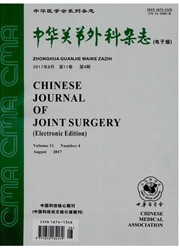

 中文摘要:
中文摘要:
目的 获得IL-17受体A(IL-17RA)特异性DNA适配子,抑制IL-17与其受体IL-17RA结合.方法 运用细胞数富集性配体系统进化方法(CELL-SELEX)获得IL-17RA特异性DNA适配子.首先将NIH3T3细胞与随机单链DNA文库孵育,收集与细胞结合的DNA.将这些DNA再与IL-17RA表达缺陷型NIH3T3细胞孵育,收集上清液中游离DNA作为下一轮筛选模板.经12轮筛选获得IL-17RA特异性适配子.EILISA和流式细胞仪筛选亲和力最好的单适配子,并检测它与NIH3T3细胞及IL-17RA蛋白的结合能力.结果 获得与IL-17RA具有高亲和力的单适配子RA10-6,体外实验证实RA10-6可有效阻止IL-17结合IL-17RA,并呈剂量依赖性.结论 RA10-6可抑制IL-17与IL-17RA结合,可作为潜在的IL-17受体阻断剂治疗骨关节炎.
 英文摘要:
英文摘要:
Objective To generate the DNA aptamers that can inhibit IL-17 binding to IL-17RA. Methods CELL-SELEX method was applied to obtain DNA aptamers specificly for IL-17RA. A single stranded (ss) DNA library with 430 probes was synthesised. By incubating this library with NIH3T3 cells, the DNA ligands that could bind the cell surface were collected. The collected ligands were incubated with IL-17RA-deficient NIH3T3 cells, and unbound ssDNA was harvested from the supernatant for the next round of selection. After 12 cycles, the specific aptamers against IL-17RA were generated. The single DNA aptamer with the highest affnity was selected by EILSA and flow cytometry. Results An aptamer termed RA10-6 was obtained that could efficiently block IL-17 binding to IL-17RA in a dose-dependent manner in vitro. Conclusion The resuhs suggest that RA10-6 can inhibit IL-17 binding to IL-17R, and it might serve as a potential drug to treat osteoarthritis by blocking IL-17/IL-17RA signals.
 同期刊论文项目
同期刊论文项目
 同项目期刊论文
同项目期刊论文
 期刊信息
期刊信息
